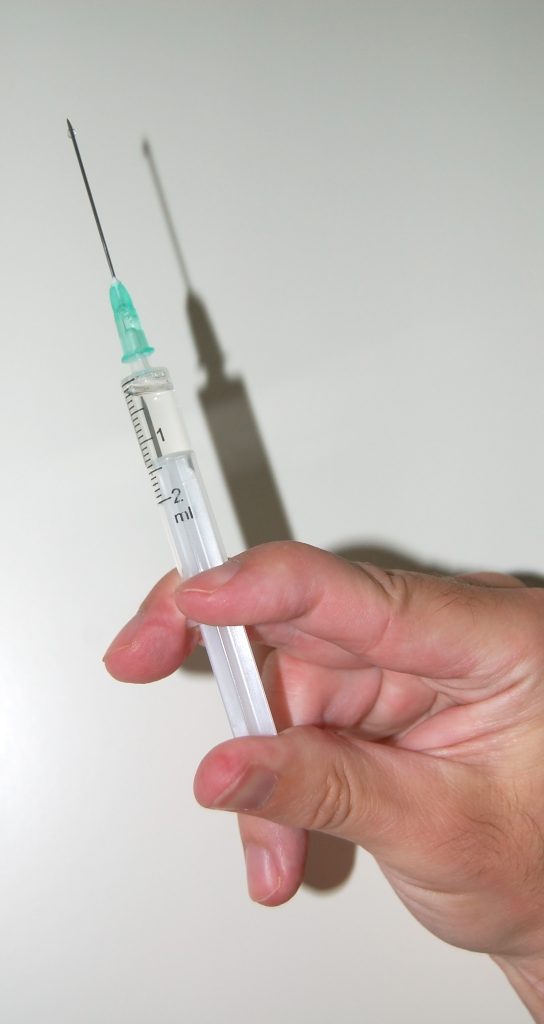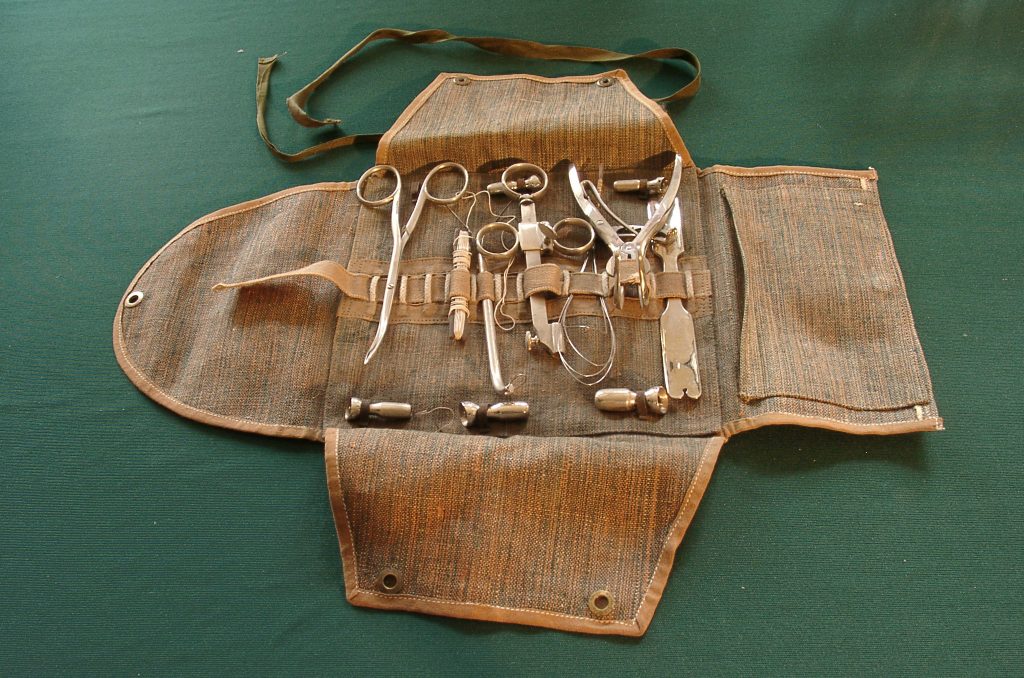 Sometimes when a plaintiff is awarded damages at trial he or she may believe that the damage amount does not match the injury he or she incurred. When this situation happens, what can a plaintiff do to challenge the damage award? And how easy is it get an increase in the damages amount? A recent First Circuit Court of Appeal case involving a Terrebonne Parish man provides guidance towards answering these questions.
Sometimes when a plaintiff is awarded damages at trial he or she may believe that the damage amount does not match the injury he or she incurred. When this situation happens, what can a plaintiff do to challenge the damage award? And how easy is it get an increase in the damages amount? A recent First Circuit Court of Appeal case involving a Terrebonne Parish man provides guidance towards answering these questions.
Arthur Mitchell was riding a public bus when the bus was cut off by, requiring the bus driver to suddenly brake to avoid the collision. As a result of the sudden braking, Mr. Mitchell was thrown forward into the metal change box located behind the driver’s seat. Mr. Mitchell brought a lawsuit against the driver who cut off the bus, Jacob Simmons, claiming that Mr. Simmons caused severe injuries to his neck, back, body, and mind. At trial, Mr. Mitchell was awarded a total damage amount of $15,718 of which $1,000 was for future medical expenses, $1,000 was for past pain and suffering, and $13,718 was for past medical expenses.
Mr. Mitchell, believing that his damages were undervalued at trial, appealed the trial court’s decision. He argued that when a jury awards future medical expenses for injuries that the jury must also award future pain and suffering damages. Mr. Mitchell argued that because the trial court did not award future pain and suffering, that the court erred in its assessment of the final damages total.
 Louisiana Personal Injury Lawyer Blog
Louisiana Personal Injury Lawyer Blog


 Often, the facts of a lawsuit are unclear. One strategy that lawyers often use to prove their version of events is to use an expert witness to corroborate their side’s story. Expert witnesses are individuals who possess knowledge in a field or area that the average person knows little to nothing about. Frequently, both sides in a lawsuit end up utilizing experts who often times have differing opinions about the facts surrounding the lawsuit. But how does a judge or jury determine which expert is correct? Recently, the Fifth Circuit Court of Appeal for the State of Louisiana addressed these questions in a workers’ compensation case.
Often, the facts of a lawsuit are unclear. One strategy that lawyers often use to prove their version of events is to use an expert witness to corroborate their side’s story. Expert witnesses are individuals who possess knowledge in a field or area that the average person knows little to nothing about. Frequently, both sides in a lawsuit end up utilizing experts who often times have differing opinions about the facts surrounding the lawsuit. But how does a judge or jury determine which expert is correct? Recently, the Fifth Circuit Court of Appeal for the State of Louisiana addressed these questions in a workers’ compensation case. When an employee is injured in the course of his or her job, then the employee will receive wage replacement and medical benefits in the form of workers’ compensation. Workers’ compensation takes the place of a lawsuit an employee can bring when he or she is injured on the job by someone’s negligence. Because employers are responsible for providing a safe work environment, it stands to reason that employers are responsible when that environment is unsafe. While workers’ compensation provides a necessary service to injured workers, there are always those who would try to take advantage of the system. This struggle to try to provide for those who are legitimately injured while at work and deny claims for those who try to defraud the system gives rise to a complex body of law. One reoccurring issue that often surfaces in workers’ compensation cases is whether an employee is injured while on the job. Recently, the Fifth Circuit Court of Appeal examined this issue when determining whether an employee for a pool table installing company injured his back while on the job.
When an employee is injured in the course of his or her job, then the employee will receive wage replacement and medical benefits in the form of workers’ compensation. Workers’ compensation takes the place of a lawsuit an employee can bring when he or she is injured on the job by someone’s negligence. Because employers are responsible for providing a safe work environment, it stands to reason that employers are responsible when that environment is unsafe. While workers’ compensation provides a necessary service to injured workers, there are always those who would try to take advantage of the system. This struggle to try to provide for those who are legitimately injured while at work and deny claims for those who try to defraud the system gives rise to a complex body of law. One reoccurring issue that often surfaces in workers’ compensation cases is whether an employee is injured while on the job. Recently, the Fifth Circuit Court of Appeal examined this issue when determining whether an employee for a pool table installing company injured his back while on the job. Accidents can happen at any time, even at work. Sometimes these accidents can aggravate a pre-existing injury. In a claim for workers’ compensation benefits, employers may use the existence of an old injury to deny payment of benefits despite a clear work accident with medical repercussions. This was the case for a government employee in Winnsboro, Louisiana.
Accidents can happen at any time, even at work. Sometimes these accidents can aggravate a pre-existing injury. In a claim for workers’ compensation benefits, employers may use the existence of an old injury to deny payment of benefits despite a clear work accident with medical repercussions. This was the case for a government employee in Winnsboro, Louisiana.  There are many questions involved in filing and pursuing a lawsuit. How do I file? When must I file? Against whom do I file it? What amount of damages do I seek? Most people are unaware that there are different types of damages. An attorney’s trial strategy not only plays a critical role in
There are many questions involved in filing and pursuing a lawsuit. How do I file? When must I file? Against whom do I file it? What amount of damages do I seek? Most people are unaware that there are different types of damages. An attorney’s trial strategy not only plays a critical role in  There really can be several hazards in a grocery store: rogue carts, other shoppers, scattered merchandise, to name a few. Even more common is the infamous puddle of water. Inevitably in a store full of liquids, patrons can slip and fall in a neglected puddle. But when should the grocery store (or any merchant) be required to compensate a patron for injuries sustained in a slip and fall case? This was the subject of a recent case out of Marrero, Louisiana.
There really can be several hazards in a grocery store: rogue carts, other shoppers, scattered merchandise, to name a few. Even more common is the infamous puddle of water. Inevitably in a store full of liquids, patrons can slip and fall in a neglected puddle. But when should the grocery store (or any merchant) be required to compensate a patron for injuries sustained in a slip and fall case? This was the subject of a recent case out of Marrero, Louisiana.  In November 2002, Ms. Annette Toston died at St. Francis Medical Center from complications from an underlying kidney infection. Prior to her death, Ms. Toston was a patient at E.A. Conway Hospital where physicians determined she requested a surgical procedure only available at St. Francis. Ms. Toston arrived at St. Francis on November 25, 2002, however, was not admitted until approximately fifteen hours after arrival. Ms. Toston subsequently died during the operation. Following the death of Ms. Toston, her seven children filed suit in the Fourth Judicial District Court. On July 14, 2014, the Judge entered a judgment in favor of Ms. Toston’s seven children. The written judgment assessed St. Francis with $100,000, damages and the Louisiana Patient’s Compensation Fund (“PCF”) with $400,000. The PCF automatically covers all state healthcare providers and caps the recovery of damages against a qualified healthcare provider at $100,000, plus interest per patient per incident. Any award in excess of the cap is paid directly by the PCF. St. Francis entered into a settlement agreement with Ms. Toston’s family for the $100,000, under the conditions that it would be released from all liability, and reserving all rights to proceed against the PCF.
In November 2002, Ms. Annette Toston died at St. Francis Medical Center from complications from an underlying kidney infection. Prior to her death, Ms. Toston was a patient at E.A. Conway Hospital where physicians determined she requested a surgical procedure only available at St. Francis. Ms. Toston arrived at St. Francis on November 25, 2002, however, was not admitted until approximately fifteen hours after arrival. Ms. Toston subsequently died during the operation. Following the death of Ms. Toston, her seven children filed suit in the Fourth Judicial District Court. On July 14, 2014, the Judge entered a judgment in favor of Ms. Toston’s seven children. The written judgment assessed St. Francis with $100,000, damages and the Louisiana Patient’s Compensation Fund (“PCF”) with $400,000. The PCF automatically covers all state healthcare providers and caps the recovery of damages against a qualified healthcare provider at $100,000, plus interest per patient per incident. Any award in excess of the cap is paid directly by the PCF. St. Francis entered into a settlement agreement with Ms. Toston’s family for the $100,000, under the conditions that it would be released from all liability, and reserving all rights to proceed against the PCF.  In any lawsuit, the party seeking relief must carry its burden by proving every element of the claim or claims which it has raised. By doing so, the party satisfies to the court that it is entitled to the relief which it seeks. One such element pivotal to all claims for workers’ compensation benefits is that the alleged injury arose out of and during employment. Proving a work-related injury solely on the injured person’s testimony can, however, doom a workers’ compensation case. This is a lesson that workers’ compensation claimant Isaac Garcia, who worked for Rouses Market in Metairie, Louisiana, learned the hard way.
In any lawsuit, the party seeking relief must carry its burden by proving every element of the claim or claims which it has raised. By doing so, the party satisfies to the court that it is entitled to the relief which it seeks. One such element pivotal to all claims for workers’ compensation benefits is that the alleged injury arose out of and during employment. Proving a work-related injury solely on the injured person’s testimony can, however, doom a workers’ compensation case. This is a lesson that workers’ compensation claimant Isaac Garcia, who worked for Rouses Market in Metairie, Louisiana, learned the hard way. Upon entering a facility for medical treatment, we all hope that we will be treated properly. However, what happens when a medical or health care professional deviates from the profession’s standards? What happens if there is a mistake in the diagnosis or treatment? Such victims certainly have an opportunity to seek redress however sometimes a jury verdict can prove disappointing. This case out of Jefferson Parish demonstrates what happens when a trial court jury does not get the proper instructions necessary for deciding a complex medical malpractice claim in Louisiana.
Upon entering a facility for medical treatment, we all hope that we will be treated properly. However, what happens when a medical or health care professional deviates from the profession’s standards? What happens if there is a mistake in the diagnosis or treatment? Such victims certainly have an opportunity to seek redress however sometimes a jury verdict can prove disappointing. This case out of Jefferson Parish demonstrates what happens when a trial court jury does not get the proper instructions necessary for deciding a complex medical malpractice claim in Louisiana.  What starts out as an entertaining night out for a concert with friends, ends with painful injuries. Instead of enjoying your favorite music with companions, you must go to the hospital to treat injuries sustained due to negligent maintenance of the concert venue. You are now recovering from your injuries and are faced with medical expenses. You know that you shouldn’t be responsible for the medical bills; after all, you are hurt because someone failed to do their job. But who exactly is responsible? Determining the party responsible for personal injuries was a recent issue in a case out of Baton Rouge.
What starts out as an entertaining night out for a concert with friends, ends with painful injuries. Instead of enjoying your favorite music with companions, you must go to the hospital to treat injuries sustained due to negligent maintenance of the concert venue. You are now recovering from your injuries and are faced with medical expenses. You know that you shouldn’t be responsible for the medical bills; after all, you are hurt because someone failed to do their job. But who exactly is responsible? Determining the party responsible for personal injuries was a recent issue in a case out of Baton Rouge.